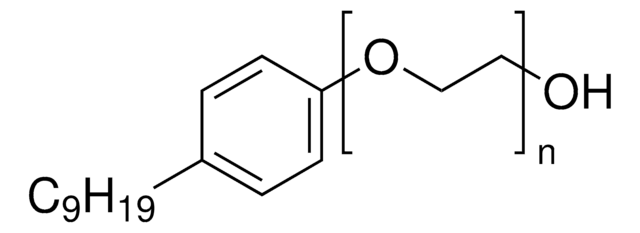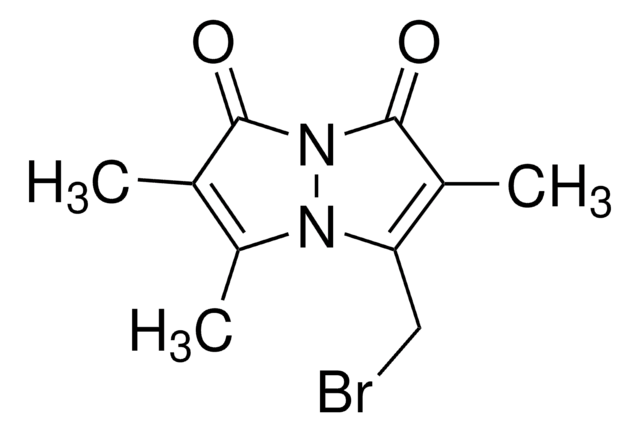Key Documents
38132
N-(5-Fluoresceinyl)maleimide
≥90% (HPLC), BioReagent, suitable for fluorescence
Synonim(y):
5-Maleimido-fluorescein
About This Item
Polecane produkty
linia produktu
BioReagent
Poziom jakości
Próba
≥90% (HPLC)
fluorescencja
λex 490 nm; λem 518 nm in 0.1 M Tris pH 8.0
przydatność
corresponds for coupling to thiols
suitable for fluorescence
temp. przechowywania
2-8°C
ciąg SMILES
Oc1ccc2c(Oc3cc(O)ccc3C24OC(=O)c5cc(ccc45)N6C(=O)C=CC6=O)c1
InChI
1S/C24H13NO7/c26-13-2-5-17-19(10-13)31-20-11-14(27)3-6-18(20)24(17)16-4-1-12(9-15(16)23(30)32-24)25-21(28)7-8-22(25)29/h1-11,26-27H
Klucz InChI
AYDAHOIUHVUJHQ-UHFFFAOYSA-N
Szukasz podobnych produktów? Odwiedź Przewodnik dotyczący porównywania produktów
Powiązane kategorie
Opis ogólny
Zastosowanie
N-(5-Fluoresceinyl) maleimide (5-FM) is used to fluorescence label molecules such as proteins and peptides via their thiol groups.
Opakowanie
Hasło ostrzegawcze
Warning
Zwroty wskazujące rodzaj zagrożenia
Klasyfikacja zagrożeń
Acute Tox. 4 Oral
Kod klasy składowania
11 - Combustible Solids
Klasa zagrożenia wodnego (WGK)
WGK 3
Temperatura zapłonu (°F)
Not applicable
Temperatura zapłonu (°C)
Not applicable
Środki ochrony indywidualnej
dust mask type N95 (US), Eyeshields, Gloves
Certyfikaty analizy (CoA)
Poszukaj Certyfikaty analizy (CoA), wpisując numer partii/serii produktów. Numery serii i partii można znaleźć na etykiecie produktu po słowach „seria” lub „partia”.
Masz już ten produkt?
Dokumenty związane z niedawno zakupionymi produktami zostały zamieszczone w Bibliotece dokumentów.
Nasz zespół naukowców ma doświadczenie we wszystkich obszarach badań, w tym w naukach przyrodniczych, materiałoznawstwie, syntezie chemicznej, chromatografii, analityce i wielu innych dziedzinach.
Skontaktuj się z zespołem ds. pomocy technicznej








